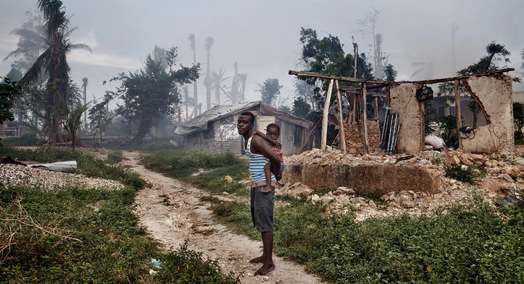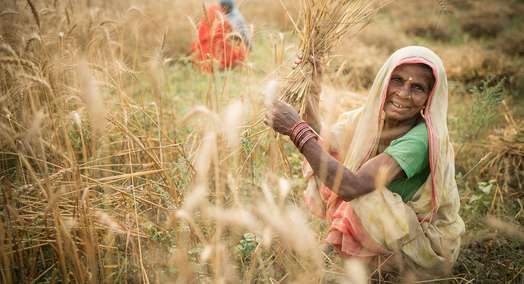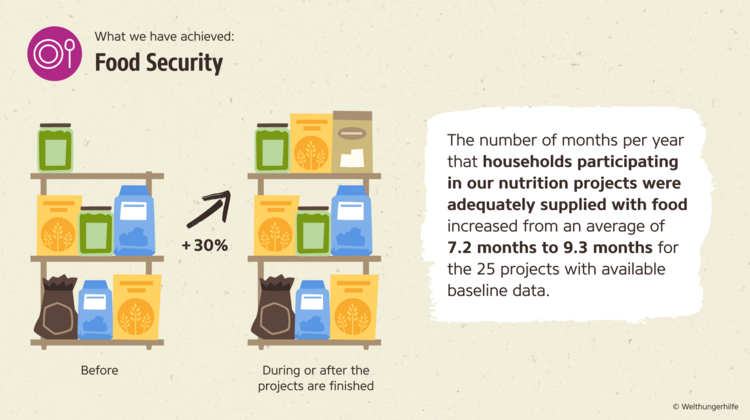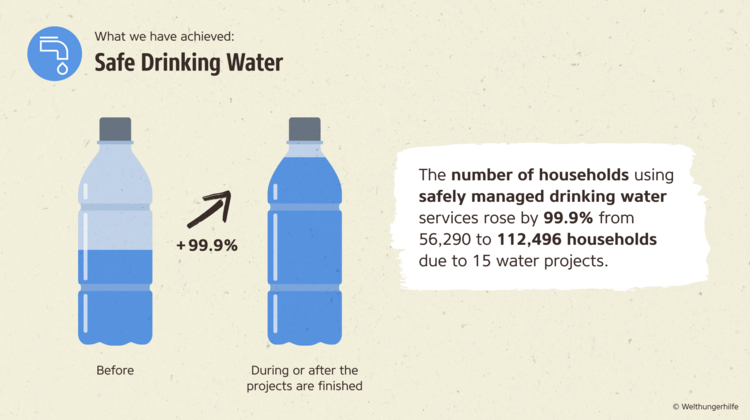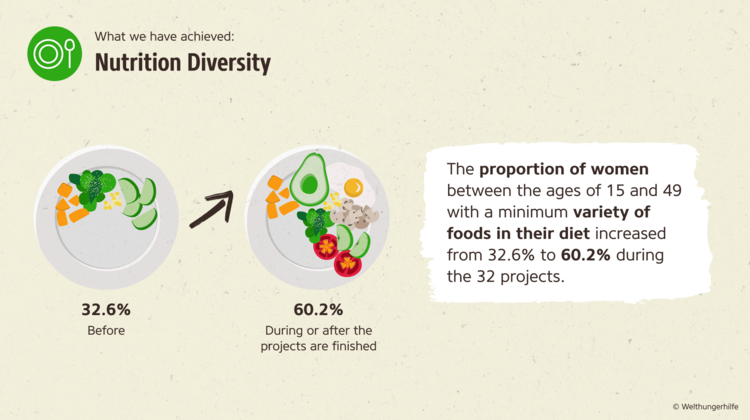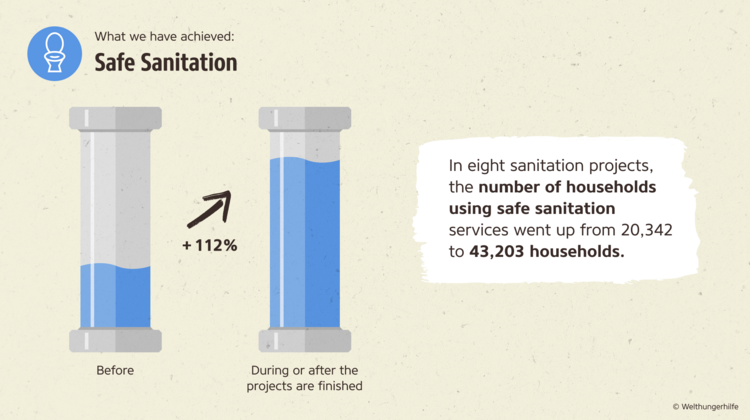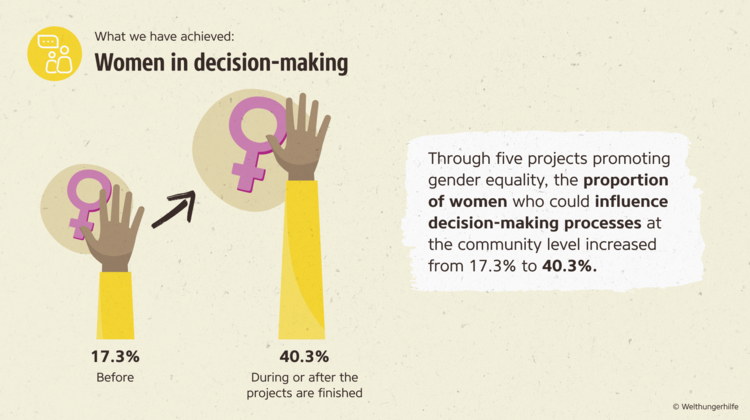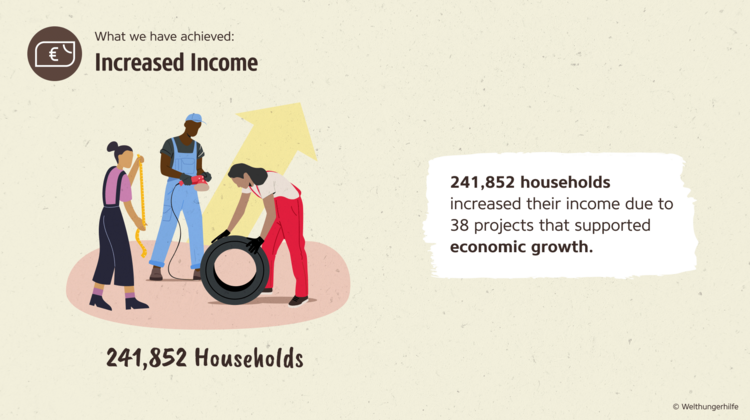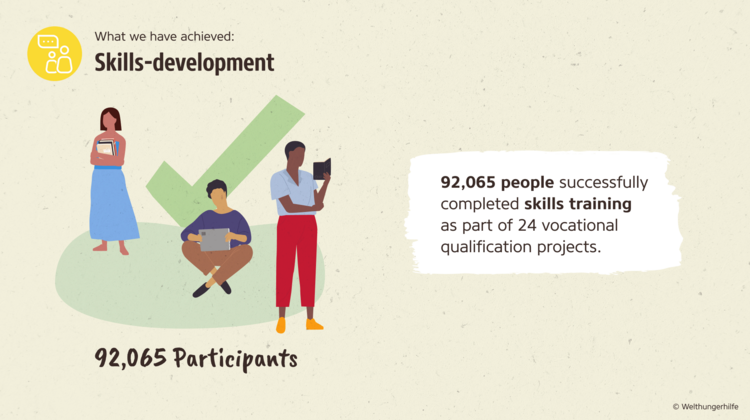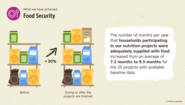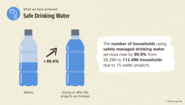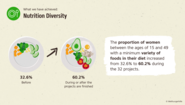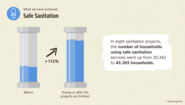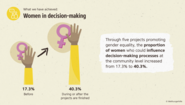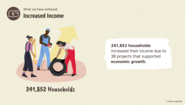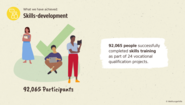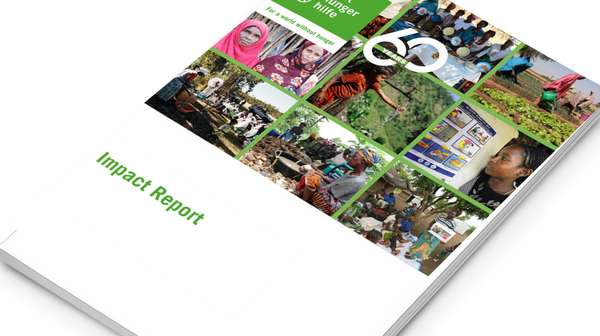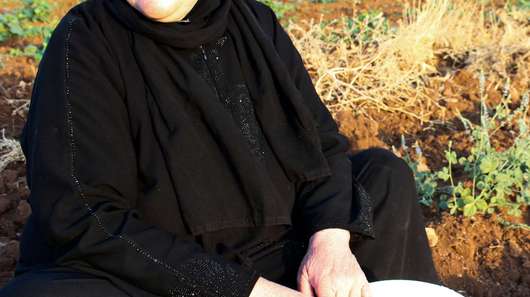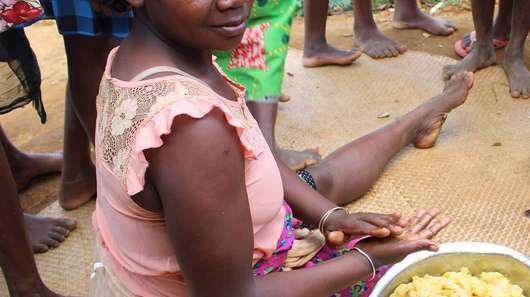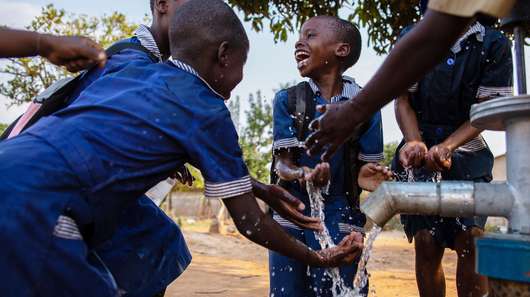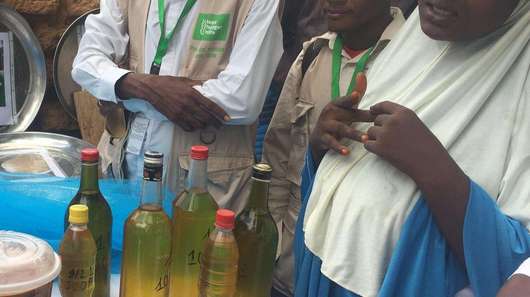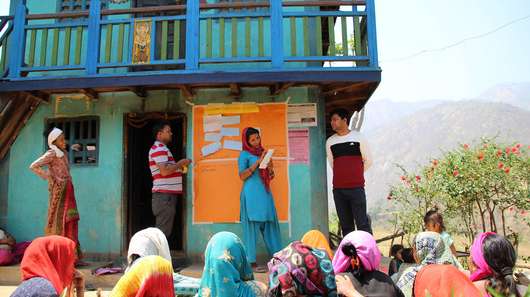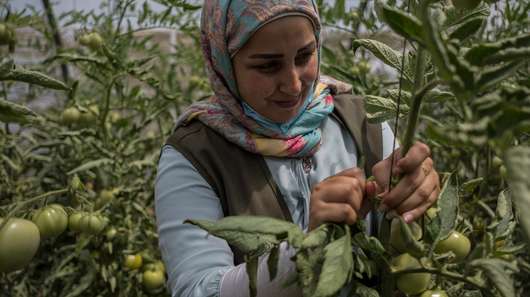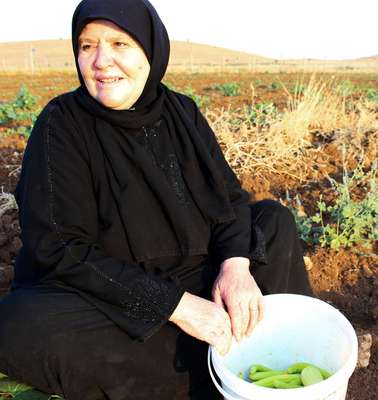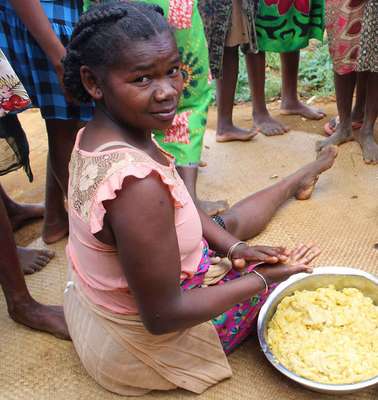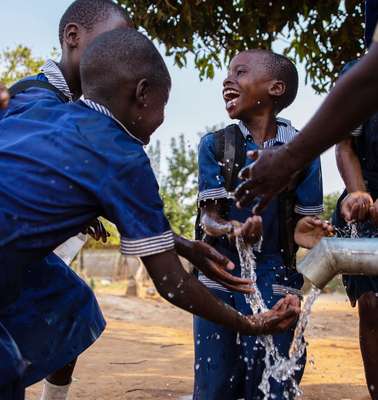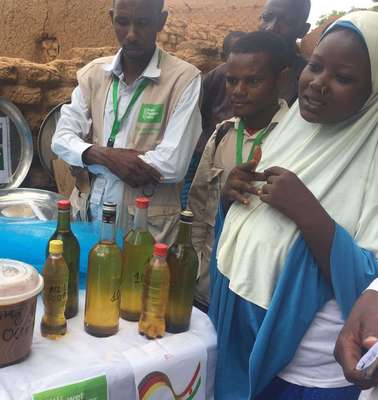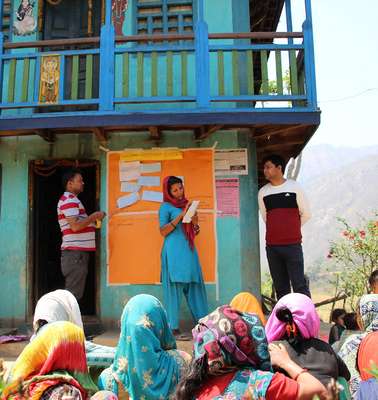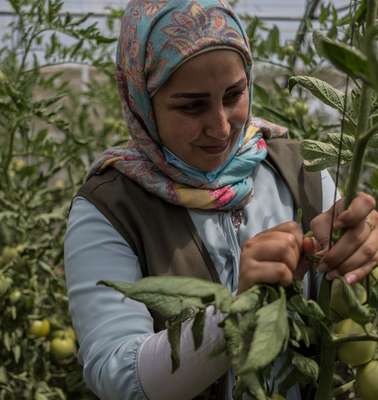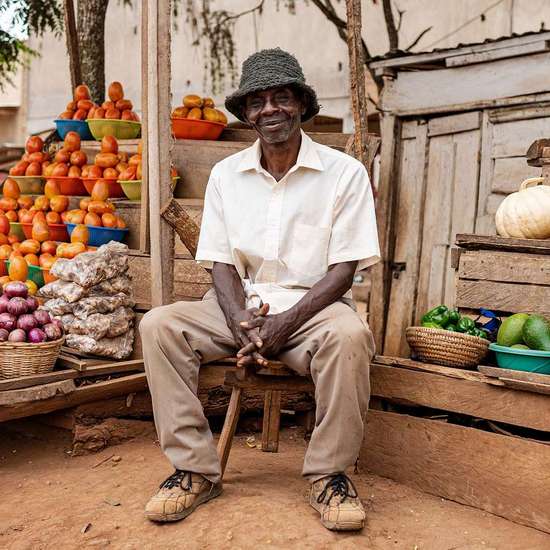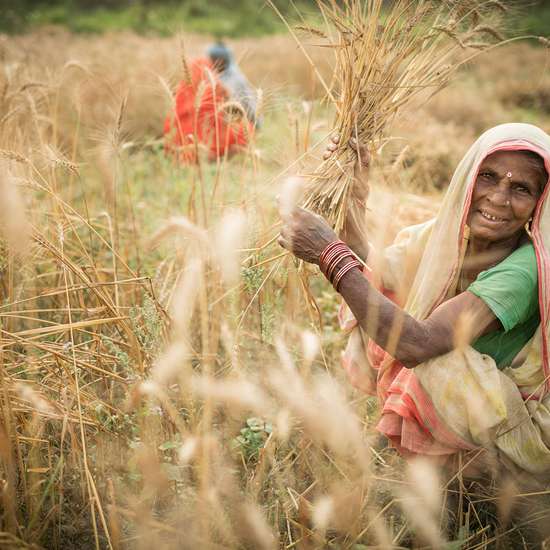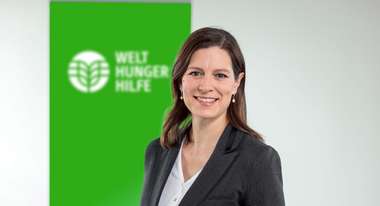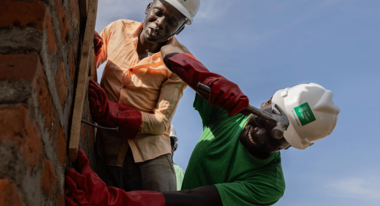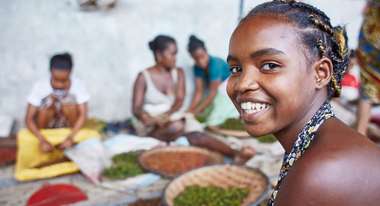This report takes stock of quantitative results from a significant part of our projects and programs.
Our Impact Report
Are our projects successful? This question is the focus of Welthungerhilfe's (WHH) first Impact Report. It shows that we have already achieved a lot together with the project participants. By measuring the impact of our programs, we can critically evaluate successes and failures – and learn from them.
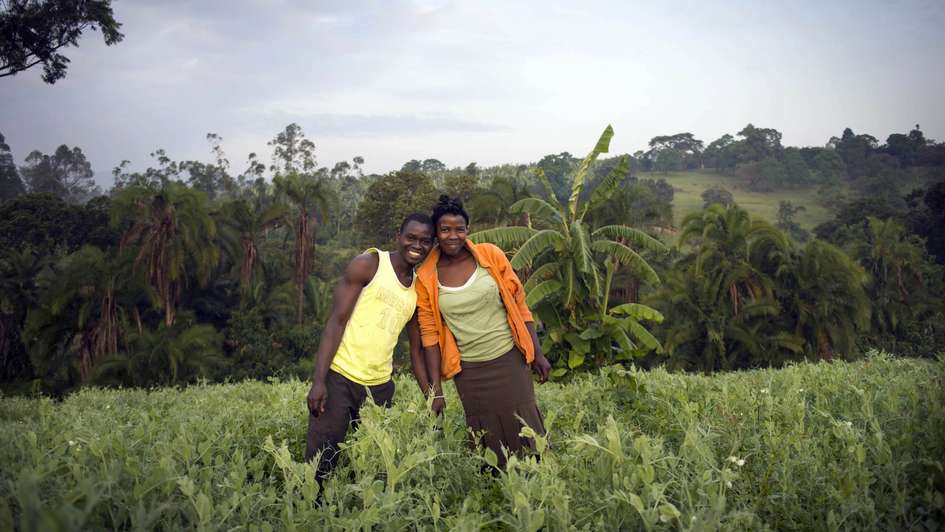
WHH takes pride in designing and implementing impact-oriented projects. In 2022 alone, we supported around 18.8 million people in 37 countries. But as a learning organization, we want to know not only how many people we support, but also how our support is having an impact.
We operate in fast-changing and risky areas, so not every project results in success. To critically reflect our successes and non-successes, our first impact report is an important milestone for our work and our goals.
Impact Report results: What we have achieved
Together with the participants in our projects, we have already achieved a lot. The results of our first impact report show that our work has had a positive impact overall. To measure our success, we examined a total of 147 data sets from our projects implemented between 2014 and 2021. Here are our successes at a glance:
What is the Impact Report of Welthungerhilfe?
The Impact Report of Welthungerhilfe is an inventory of quantitative and qualitative results that we use to find out whether and why our programs and projects have brought about changes in our project participants.
The quantitative results describe the extent of the changes/impacts we have achieved with our project participants. The qualitative results show why these changes have occurred and what makes projects successful.
This is the only way we can improve, identify the potential for optimizing our methods, digital technologies and software, and in turn, adapt them.
The results inventory relates to our seven main areas of activity: food security, nutrient supply, drinking water supply, sanitation, economic development, women's empowerment and professional development.
Through this report we aim to promote and strengthen our culture of transparency, learning, and accountability.
Definition of impact
In 2008, WHH developed and introduced its own definition of impact:
"Long-term, intended and unintended, positive and negative changes in various project stakeholders (target groups, partner organizations, local organizations, etc.) and in the project environment. These impacts may occur as a result of interventions during project implementation and/or after project completion."
When defining impact, it is important to distinguish between outcome and impact.
- Outcome describes the immediate and tangible results that come directly from our projects. These results are measurable and demonstrate how our efforts directly impact people's lives or the community. Direct impact comes from the use of the services we provide.
- Impact refers to long-term and indirect changes that projects or programs seek to achieve, such as poverty reduction in participating communities. However, this can be influenced by external factors, such as the economic situation, environmental impacts and conflicts.
Using the example of WHH's SkillUp! program, direct outcomes describe the improved opportunities for people in rural communities in the labor market (whether for employment or self-employment) achieved by improving job skills.
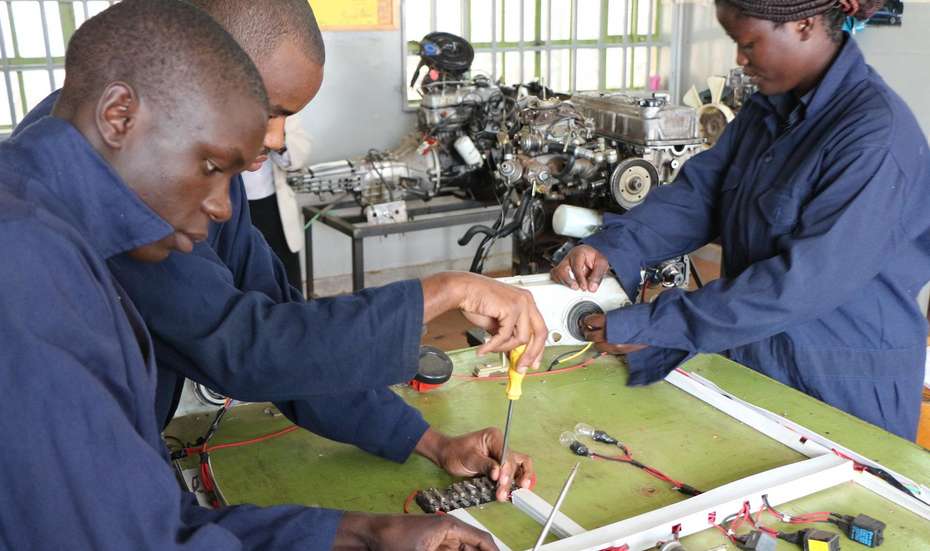
Our approach to measuring change and impact
Our programs and projects are designed to improve the lives of project participants and achieve positive changes and impacts. We use a variety of methods and approaches to determine what these are, which we continually revise and adapt.
The MEAL principle (Monitoring, Evaluation, Accountability and Learning) ...
... addresses fundamental questions such as, "Do the interventions work?", "Which changes have been achieved for whom?", "How did our interventions achieve these effects?" and "How can we increase our impact?"
The main goals of MEAL are to use data and gain insight to:
- enable project and program steering and decision-making;
- ensure accountability and transparency; and improve the quality of projects and programs.
Guidelines for measuring the success of WHH activities
In our guidelines for measuring success, we have defined what we mean by success and how it can be measured. In doing so, we use a mix of methods. This is standard for WHH's data collection process and includes quantitative as well as qualitative approaches.
Seven standardized quantitative indicators allow us to measure the results of our programs and projects in our main intervention areas. Using these seven indicators, we aim to answer the guiding question, "How much better are project participants doing?" For each indicator, we work with standardized questionnaires as well as survey guides.
Four qualitative methods complement the performance measurement and increase the validity and reliability of the data:
1. focus group discussions
A discussion with representatives gathers information from the community to gain insight into the quantitative data of the success measurement and to better understand the reasons for observed changes.
2. stories of change
Participants in WHH projects report on changes in their lives attributed to a specific program or project.
3. self-assessment of sustainability among project team members
An assessment is made from the team's perspective on the expected or anticipated sustainability of a program or project. From the results, teams can take actions to improve sustainability.
4. community score card
A community-based monitoring tool that informs the community (citizens) of their right to certain public services, assesses the quality of the service delivery, and supports dialogue between public service providers and communities (citizens).
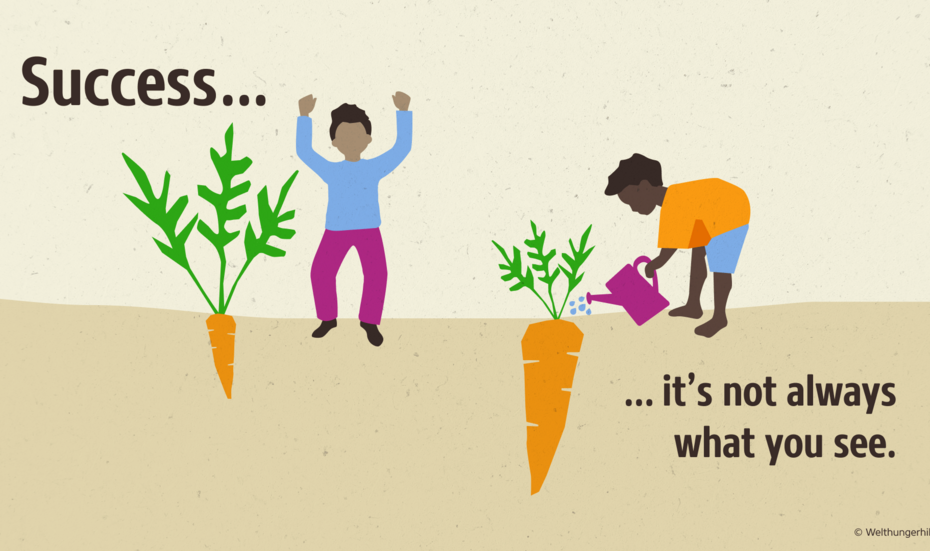
The following questions are also central to measuring success: "How many people are we reaching?", "Are we reaching the right people?", and "Will the positive effects be sustained?". In each of our projects and programs, we use a monitoring system to ensure quality in governance and management. In addition, our project evaluations provide further insights.
These quality management tools help us to continuously improve the impact and quality of our work. We also use methods to find out whether the positive effects are sustainable beyond the end of the project.
MAPP (Method for Evaluation of Programs and Projects)
With the MAPP method, for example, we can gain information about how sustainable and effective our activities are.
Since 2018, we have conducted MAPP studies in Uganda and Zimbabwe, among other countries. The results of the studies have proven that there have been sustainable positive changes due to our projects.
In Zimbabwe, the MAPP study was based on a project that focused on drinking water, sanitation, and hygiene. The results showed that there was greater access to the use of drinking water and sanitation services.
Impact Report of Welthungerhilfe: are our projects successful?
WHH's impact report shows that project participants have taken a big step toward "Zero Hunger". In 2022, we were able to support around 18.8 million people in 603 programs and projects through our 30 country offices.
Our projects contribute to sustainable positive changes. However, these alone are not enough. To realize the right to food, we need long-term positive structural change. For this, we also need to further intensify our commitment to implementing rights-based projects.
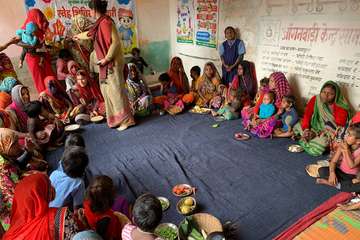
Local communities and civil society need more space to be heard, and governments and the private sector require more support to optimize partnerships with civil society. To move closer to this goal, we aim to further improve our organization-wide knowledge of the impacts and changes we achieve.
In the wake of increasing conflict and climate shocks, we need to promote system strengthening approaches to build resilience in food systems. One example is our global WASH program, which aims to sustainably improve water, sanitation and hygiene – in collaboration with civil society, government stakeholders and the private sector.
We are also taking a more holistic approach to food systems – the only way to make food access and use more sustainable, inclusive and resilient.
We are continuously developing the guide for measuring success. To capture WHH’s work in a changing environment in the face of new challenges, the guide will be supplemented with three additional success indicators from sustainable agriculture, climate resilience and emergency humanitarian aid. This will give us an overview of WHH’ key areas of action and allow us to measure and compare the success of project approaches not evaluated before. We will publish the initial results on our impact in these areas in the next Impact Report in 2024.
